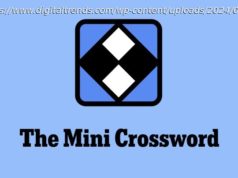Microsoft’s much-hyped free upgrade offer for Windows 10 ended in 2016, right? Not exactly. The GWX tool may be gone, but all the other upgrade tools still work, and the end result is an apparently valid digital license. But those offers could end soon.
Everyone knows the free upgrade offer for Windows 10 ended on July 29,2016, right?
That’s when Microsoft officially ended the Get Windows 10 program and, to the relief of many, stopped forcing the GWX tool onto the PCs of unsuspecting users who were perfectly happy with their current version of Windows and had no desire to upgrade.
Update (Nov 3 2017): Microsoft quietly announces end of last free Windows 10 upgrades
As of July 30,2016, the upgrade notifications stopped and the GWX app began disappearing. In theory, that means the only way to get a Windows 10 upgrade is to pay for it.
The funny thing is, no one told the folks who run Microsoft’s activation servers. Which means today, nearly 18 months after the free upgrade offer supposedly ended, you can still upgrade to Windows 10 from Windows 7 or Windows 8.1 and claim a free digital entitlement, without being forced to jump through any hoops.
You can also still upgrade Windows 10 Home to Windows 10 Pro by using a product key from a previous business edition of Windows 7,8, or 8.1 (Pro/Ultimate). That can save you $50-100 in OEM upgrade charges if you buy a new PC with Windows 10 Home preinstalled. (For details, see How to upgrade from Windows 10 Home to Pro without hassles .)
In this post, I’ll cover the basics of a Windows 10 upgrade. I’ll also talk about the licensing issues involved, which are (as always) confusing.
In early 2017, I recycled an Intel small-form-factor PC that had previously been working full-time in the living room, running Windows Media Center on Windows 7 Ultimate. When I finally pulled the plug on Media Center after the release of Windows 10, I had put this little device on a shelf.
The GWX utility had never been installed on this PC and it had never been offered a Windows 10 upgrade via Windows Update.
As part of my digital clean-up, I decided to run the Windows 10 upgrade from Windows 7. I fully expected that after the upgrade was complete, the system would fail activation and I’d be asked for a product key.
Imagine my surprise when, instead, I was greeted with this screen.
I confirmed the same sequence on two different virtual machines, both created from scratch and running clean, fully activated installs of Windows 7 and Windows 8.1, respectively. I’ve repeated those steps on test PCs at least monthly since the release of the Creators Update in April 2017 and the Fall Creators Update in October 2017, and I continue to receive confirmation from people who’ve seen the same results on their home or office PCs.
If you have a PC running a „genuine“ copy of Windows 7/8/8.1 (properly licensed and activated), you can follow the same steps I did to upgrade it to Windows 10.
To get started, go to the Download Windows 10 webpage and click the Download tool now button. After the download completes, run the Media Creation Tool.
If you’ve downloaded the Media Creation Tool on the machine you plan to upgrade, and you plan to upgrade one and only one PC, you can choose the Upgrade this PC now option and be done with it.
If you’re running the tool on a different PC, or if you just want more flexibility, choose the second option and save the installation files to a USB drive or as an ISO file.
After the download is complete, double-click the ISO file to mount it and open a File Explorer window; or, if you chose the option to create a bootable drive, open the USB flash drive in File Explorer and run Setup from there.
Then just follow the prompts to complete the upgrade. You will not be asked for a product key, and when the upgrade is complete and you’ve connected to the Internet, you’ll have a digital license to Windows 10, which you can confirm by going to Settings > Update & security > Activation.
The digital license is associated with that specific device, which means you can reformat the disk and perform a clean installation of the same edition of Windows 10 anytime. You won’t need a product key, and activation is automatic.
And now the big question: If you avail yourself of this upgrade, is the resulting license valid?
The entire „free upgrade“ offer was always accompanied by language that was, to put it politely, a bit squishy. And the language around the end of that offer is similarly vague. For example, see the answers I’ve highlighted here on Microsoft’s Windows 10 Upgrade FAQ:
That’s very odd language. The free upgrade through the Get Windows 10 app ended on July 29,2016. Likewise, the discussion of product keys says a key will be necessary „for this tool to work“ (not true) but doesn’t say a word about licensing.
And unlike the weasely „Genuine Windows“ label on older upgrades, the activation screens for a Windows 10 upgrade specifically confirm the existence of a „digital license.“
Anyway, the free upgrade offer was extended, at least for people who use assistive technologies. The FAQ on a separate page even calls it a „free upgrade offer extension“ and pointedly notes that it is not limited to specific assistive technologies.
Personally, I’m a regular user of one assistive technology, the Magnifier built into Windows, which can be triggered by pressing Windows key + plus sign. That makes me eligible for a free upgrade on any device I use. Clicking the Upgrade Now button on that page kicks off an Upgrade Assistant that is functionally identical to the one used by the old GWX app.
Of course, I’m not a lawyer, and this column isn’t legal advice. But I will say that I am personally confident in the activation status of any PC upgraded using the tool on this page.
This extension was, I think, a very large nod and wink, designed to make it easy for those who wanted a Windows 10 upgrade to still get it while placating the OEM partners who were none too happy about the year-long emphasis on upgrades rather than new PC sales.






